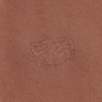Again we continue onward in the series of practicing techniques that require no physical practice. In this Installment I will cover another technique that I myself still use to this day called Fretboard Visualization. The concept is not a new one but to tap into the power of this can be strenuous in the beginning. I started using this was when I was in high school and college when I was having trouble falling asleep at night - maybe not the best time but the most quiet time for me. After a while I could visualize scales all over the fretboard and after a while I even started transposing them into different positions.
Now I try to work with visualization when it comes to arpeggios and altered scales and when they should be applied as practicing time. You can and should also use visualization as a method of practice in learning a new lick or technique. This will get another part of your brain involved in the process and help solidify a link between your hands and ears.
So how does one start with fretboard visualization? Start in small steps and then add on.
1. Start with scale fragments like the one below and visualize it in different positions on the fretboard. Start with octaves first and then move it up and down the fretboard and transpose it into different keys in your head. You can start the process and check yourself on the guitar to see how you`re doing and make corrections and then start the process again.

2. If you want to memorize where all of the notes are on the fretboard, start with one string at a time from the open position up a half step at a time. Picture yourself playing each note and say to yourself "E, F, F sharp or G flat, G, G sharp or A flat..." and continue all the way up until there are no more frets.
3. Work with different closed chord shapes and visualize them through the cycle of fourths and fifths and again check yourself with the guitar.

4. The Ultimate Goal: To be able to visualize the entire fretboard in front of you and looking at the dots on the fretboard that make up a scale from beginning to the end is what we all aim to achieve. Then you can picture shapes and chords that maybe you do not know what the names of them are but they sound really cool! Try to be free with it and experiment as much as possible. You will find that your playing may change based on how you now perceive the fretboard and your creativity should take some more steps forward.
Until next time I hope you try to employ some of these techniques to help you in becoming the guitar player you want to be.
Joe Pinnavaia is a professional musician, guitarist, instructor and composer from Buffalo, NY, USA.
His first solo release, "InVitro", under the project name Test Tube Rhino, is now available digitally from iTunes and Amazon from Steve Vai's Digital Nations.
